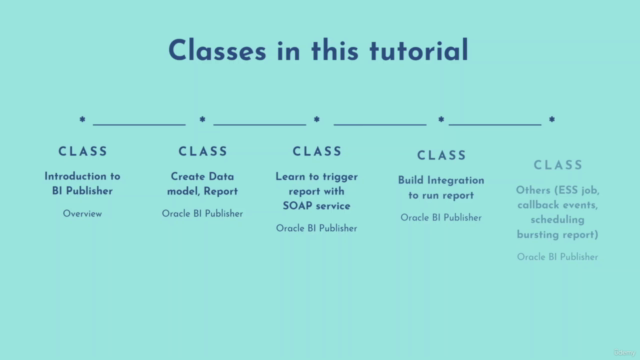Basics of Oracle BI Publisher (BIP) for Oracle Integration
Oracle Business Intelligence Publisher (BIP) essentials course for Oracle Integration developers
3.25 (2 reviews)

17
students
3.5 hours
content
Feb 2025
last update
$19.99
regular price
What you will learn
Oracle BI Publisher (BIP) report creation
Oracle BI Publisher (BIP) data model creation
Oracle Integration to automate report scheduling and fetching details
ESS job creation for BIP reports
Bursting of BIP report to email and FTP server
Screenshots




4730470
udemy ID
6/12/2022
course created date
8/22/2022
course indexed date
Bot
course submited by